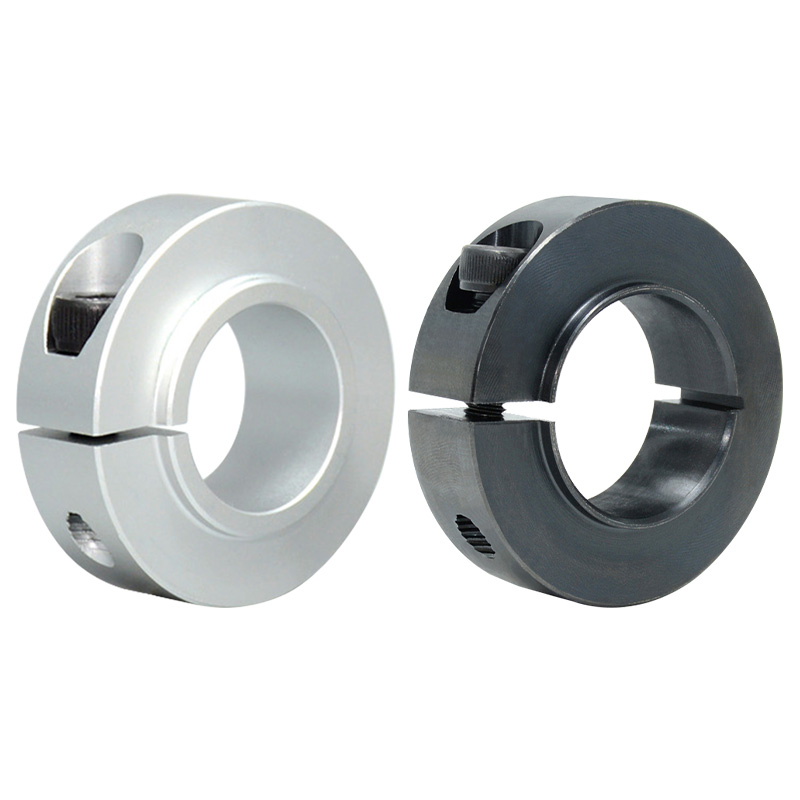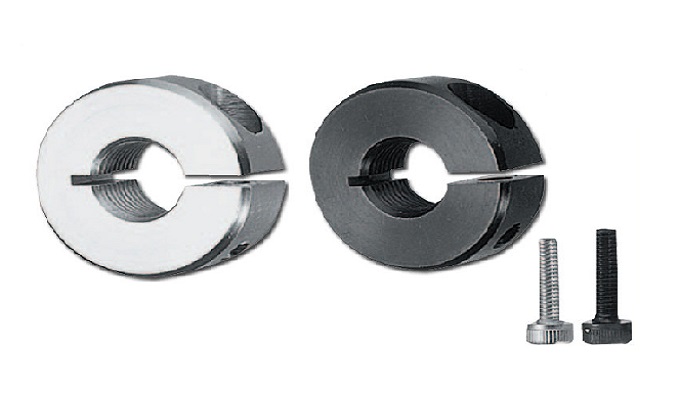Locating rings are a type of precision component commonly used in motion control systems to ensure accurate and repeatable positioning of components. They are typically made of high-quality materials such as stainless steel or hardened tool steel and are designed to withstand the rigors of industrial use.
Here are some additional details about locating rings in motion control:
How do locating rings function in motion control systems?
Locating rings provide a precise reference point for the component they are locating. This reference point allows the component to be positioned accurately and repeatably, even after it has been removed and reinstalled. In this way, locating rings helps ensure the motion control system's overall accuracy and precision. Here are some key points that explain how locating rings functions in motion control systems:
Locating rings are circular components often used in pairs, with one ring placed on the moving component and the other on the stationary component. The rings are designed to fit together tightly, creating a precise alignment and preventing lateral movement.
The locating rings can be used to guide linear motion, rotational motion, or a combination of both. They are often used in precision machinery where accuracy and repeatability are critical, such as in semiconductor manufacturing equipment, medical devices, or aerospace components.
Depending on the specific application, locating rings can be made from various materials. Common materials include steel, ceramic, or plastic. The choice of material will depend on factors such as the speed and temperature of the motion, the load capacity required, and the level of precision needed.
Locating rings can also be combined with other motion control components, such as bearings, to provide additional stability and precision. For example, a locating ring may be used with a linear guide rail to prevent any lateral movement of the rail.
The use of locating rings can help to improve the overall performance of a motion control system by reducing vibration, improving accuracy, and increasing the lifespan of the components. Locating rings can help ensure the system operates smoothly and reliably by providing a precise and stable guide for moving components.
Locating rings is critical to many motion control systems, providing a precise and stable guide for moving components. Engineers and designers can optimize their use in precision machinery and other motion control systems by understanding how locating rings function and their various applications.

What are the advantages of using locating rings in motion control systems?
Locating rings can provide several advantages in motion control systems, including improved accuracy, repeatability, and reliability. Locating rings can also help to reduce assembly time and improve overall system performance. Some of the advantages of using locating rings are:
Precise alignment: Locating rings ensure precise alignment of mating parts in motion control systems. They provide accurate and repeatable positioning of components, which is critical for achieving accurate and consistent motion.
Reduced assembly time: Using locating rings can significantly reduce assembly time, eliminating the need for trial-and-error methods to align mating components. This results in faster assembly and reduced downtime for maintenance.
Improved performance: Precise alignment of components with locating rings improves system performance. It reduces wear and tear on components, reduces vibration and noise, and increases system accuracy and repeatability.
Increased reliability: Locating rings can also increase system reliability by reducing the risk of misalignment or component damage due to improper assembly or operation. This can result in longer component life and reduced downtime for maintenance and repairs.
Cost-effective: Using locating rings can be a cost-effective solution for motion control systems, as they can reduce the need for expensive precision components or complex alignment methods.
Locating rings in motion control systems can improve system performance, reduce assembly time, increase reliability, and provide a cost-effective solution.
What types of components can be located using locating rings?
Locating rings can be used to locate various components, including bearings, shafts, and other parts. They are often used in applications where precise positioning and repeatability are critical, such as manufacturing processes, robotics, and automation systems. Some common components that can be located using locating rings include:
Shafts: Locating rings can locate and align shafts in gearboxes, motors, and other rotating machinery. This ensures the shafts are precisely aligned for efficient power transmission and reduced wear.
Bearings: Locating rings can also be used to locate and align bearings in machine housings, ensuring that the bearings are positioned correctly for optimal performance and reduced wear.
Gears: Locating rings can locate and align gears in gearboxes, ensuring precise meshing and reduced wear.
Housings: Locating rings can be used to locate and align housings in machines, ensuring that they are positioned correctly for optimal performance and reduced wear.
Couplings: Locating rings can locate and align couplings in rotating machinery, ensuring they are precisely aligned for efficient power transmission and reduced wear.
Overall, locating rings can be used to locate and align any component in motion control systems where precise positioning is critical for optimal performance and reduced wear.
What types of locating rings are available?
There are various types of locating rings available that are designed for different applications and requirements. Some common types of locating rings are:
Round locating rings: Round locating rings are the most common type of locating rings used to align cylindrical components such as shafts, bearings, and housings.
Rectangular locating rings: Rectangular locating rings align rectangular or square components, such as machine tool tables, fixtures, and plates.
Diamond locating rings: Diamond locating rings align components that require axial and radial alignment, such as bevel gears and tapered roller bearings.
Tapered locating rings: Tapered locating rings align tapered components such as tapered roller bearings, ensuring accurate and repeatable positioning.
Half-round locating rings: Half-round locating rings are used to align curved components such as camshafts and crankshafts.
Stepped locating rings: Stepped locating rings align components with different diameters, ensuring accurate and repeatable positioning.
Pin locating rings: Pin locating rings align components by inserting pins into mating holes, ensuring accurate and repeatable positioning.
The choice of locating ring depends on the specific application, component size, and shape, and required accuracy and repeatability.
How are locating rings installed in motion control systems?
Locating rings are typically installed during the assembly process of motion control systems. Locating rings are typically installed using press-fit or interference-fit methods. They are designed to fit tightly around the located component, providing a secure and accurate reference point. Care must be taken during installation to ensure that the locating ring is aligned correctly and installed with the appropriate level of force. The exact installation process may vary depending on the specific application and type of locating ring being used. However, here are some general steps that can be followed to install locating rings:
Identify the correct size and type of locating ring required for the application.
Clean the surfaces of the mating components where the locating ring will be installed to ensure they are free from debris, dirt, or oil.
Place the locating ring onto one of the mating components, ensuring it is correctly positioned and aligned.
Slide the second mating component onto the locating ring, ensuring it is correctly positioned and aligned.
Tighten any fasteners, such as bolts or screws, to secure the mating components.
Check the alignment of the mating components using precision measuring tools such as dial indicators, laser alignment systems, or coordinate measuring machines.
If necessary, adjust the positioning of the mating components or the locating ring to achieve the required accuracy and repeatability.
Once the alignment is satisfactory, tighten all fasteners to the recommended torque values.
Verify the alignment of the system again after a short period of operation to ensure that the locating ring is functioning correctly and the alignment is still within the required tolerances.
Overall, locating rings is important in many motion control systems, providing precise and repeatable positioning of components. When designing a motion control system, it is important to consider locating rings to improve accuracy, reliability, and overall performance.





